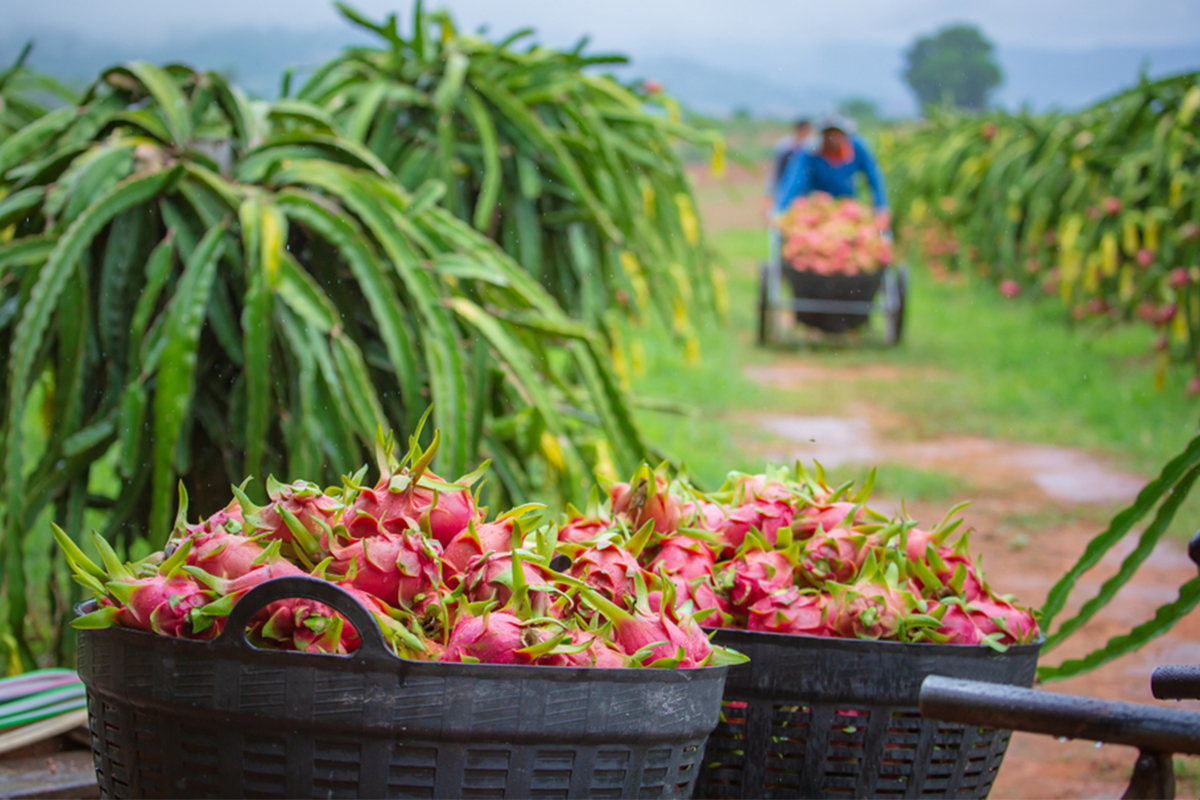Dragon fruit, also known as pitaya, is a tropical fruit that has gained popularity for its unique appearance, delightful taste, and numerous health benefits. Originating from Central America, this exotic fruit is now being cultivated in various parts of the world, including India. The rising demand for dragon fruit in domestic and international markets has encouraged Indian farmers to explore its cultivation. This comprehensive guide aims to provide detailed insights into dragon fruit farming in India, covering aspects such as climate requirements, soil preparation, planting techniques, care and maintenance, pest management, and harvesting.
Dragon fruit belongs to the cactus family and is scientifically known as Hylocereus undatus. It is characterized by its bright red or yellow skin, green scales, and white or red flesh dotted with tiny black seeds. The fruit is rich in vitamins, minerals, antioxidants, and fiber, making it a popular choice among health-conscious consumers.
1. Climate Requirements
Dragon fruit thrives in warm and humid climates, ideally in regions with temperatures ranging from 20°C to 30°C. It requires a minimum of six hours of sunlight daily to grow well. While it can tolerate short periods of drought, prolonged dry spells or excessive rainfall can adversely affect its growth and fruit production. Therefore, regions with moderate rainfall and well-distributed seasons are ideal for dragon fruit farming.
2. Soil Preparation
Dragon fruit plants prefer well-drained, sandy loam soil with a pH level between 6 and 7. Before planting, it’s essential to prepare the soil by:
- Plowing and Leveling: Ensure the soil is plowed thoroughly to remove weeds and debris. Level the field to facilitate uniform irrigation and drainage.
- Adding Organic Matter: Incorporate organic matter such as compost or well-rotted manure to improve soil fertility and structure.
- Testing Soil: Conduct a soil test to determine nutrient levels and pH. Based on the results, apply necessary amendments to optimize soil conditions.
3. Planting Techniques
Dragon fruit can be propagated through seeds or stem cuttings. However, stem cuttings are preferred due to their faster growth and higher success rate. Follow these steps for planting:
- Selecting Cuttings: Choose healthy, disease-free cuttings from mature dragon fruit plants. Each cutting should be about 30-50 cm long.
- Preparing Cuttings: Allow the cuttings to dry in a shaded area for a few days to form calluses at the cut ends. This helps prevent rot when planted.
- Planting: Plant the cuttings in well-prepared soil, burying one-third of their length. Maintain a spacing of 2-3 meters between plants and 3-4 meters between rows to allow adequate airflow and sunlight penetration.
4. Care and Maintenance
Proper care and maintenance are crucial for healthy growth and high yields. Key aspects include:
- Irrigation: Dragon fruit plants require regular watering, especially during the initial stages of growth. However, avoid overwatering as it can lead to root rot. Drip irrigation is an effective method to provide consistent moisture.
- Fertilization: Apply a balanced fertilizer containing nitrogen, phosphorus, and potassium to promote healthy growth. Organic fertilizers like compost and vermicompost can also be used. Fertilize the plants every 2-3 months.
- Pruning: Regular pruning helps maintain the plant’s shape, encourages new growth, and improves fruit quality. Remove dead or diseased stems and any excess growth that hinders airflow and sunlight.
- Support Structures: Dragon fruit plants are climbing cacti and require support structures like trellises or poles to grow upright. Ensure the support is sturdy enough to bear the weight of the plants and fruits
5. Pest and Disease Management
Dragon fruit plants are relatively hardy but can be susceptible to pests and diseases. Common issues include:
- Pests: Aphids, mealybugs, and spider mites can infest dragon fruit plants. Regular monitoring and the use of organic insecticides or neem oil can help manage these pests.
- Diseases: Fungal infections like anthracnose and stem rot can affect dragon fruit plants. Ensure proper spacing, avoid waterlogging, and apply fungicides when necessary.
6. Harvesting and Post-Harvest Management
Dragon fruit plants start bearing fruit within 1-2 years of planting, with peak production occurring after 3-4 years. The fruits are ready for harvest 30-50 days after flowering, when the skin color changes to red or yellow, depending on the variety.
- Harvesting: Use sharp scissors or pruning shears to cut the fruit from the stem, leaving a small portion of the stem attached. Handle the fruits carefully to avoid bruising.
- Post-Harvest Management: Sort the fruits based on size and quality. Clean them with a soft cloth to remove dirt and debris. Store the fruits in a cool, dry place or refrigerate to extend their shelf life.
7. Marketing and Profitability
The growing demand for dragon fruit in both domestic and international markets presents lucrative opportunities for farmers. Marketing strategies include:
- Local Markets: Sell directly to local markets, supermarkets, and fruit vendors.
- Export: Explore export opportunities to countries with high demand for exotic fruits.
- Value Addition: Consider value-added products like dragon fruit juice, jams, and dried slices to increase profitability.
Conclusion
Dragon fruit farming in India is a promising venture that offers significant economic potential. With proper planning, care, and management, farmers can achieve high yields and profitability. By following this comprehensive guide, aspiring dragon fruit farmers can embark on a successful journey in cultivating this exotic and nutritious fruit.


